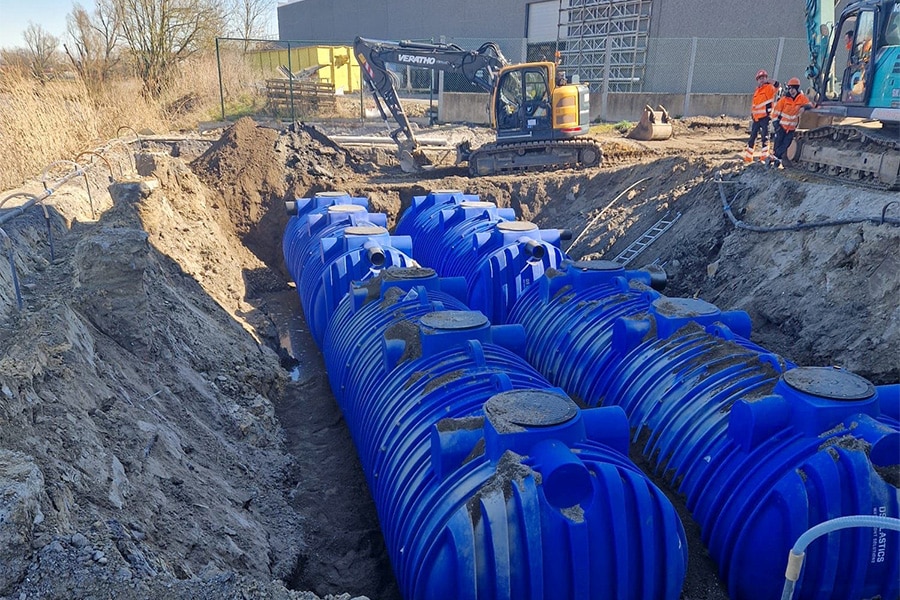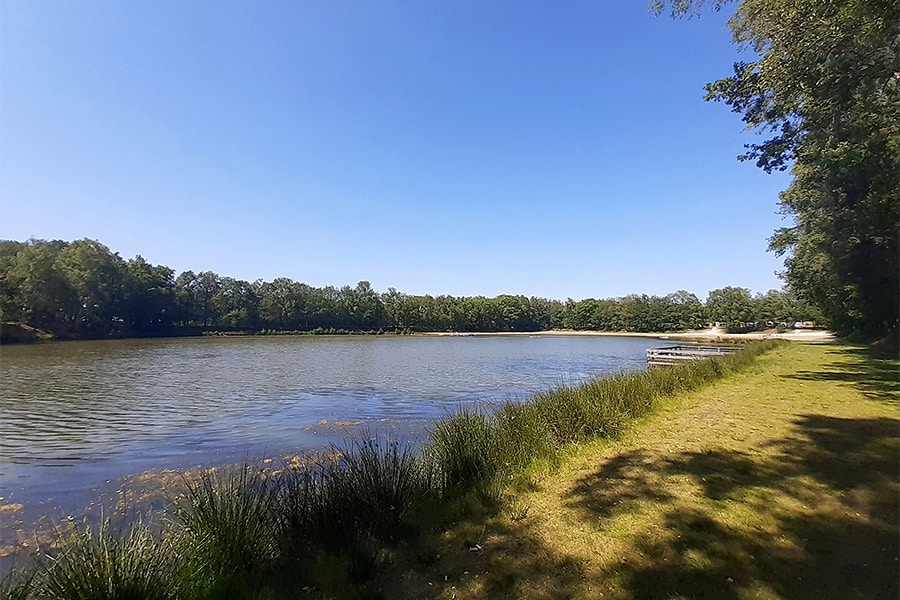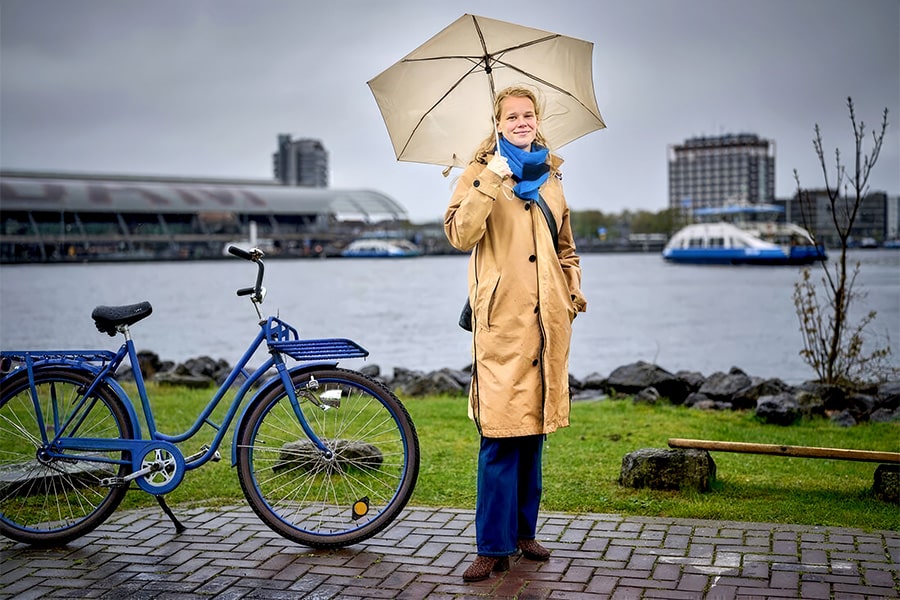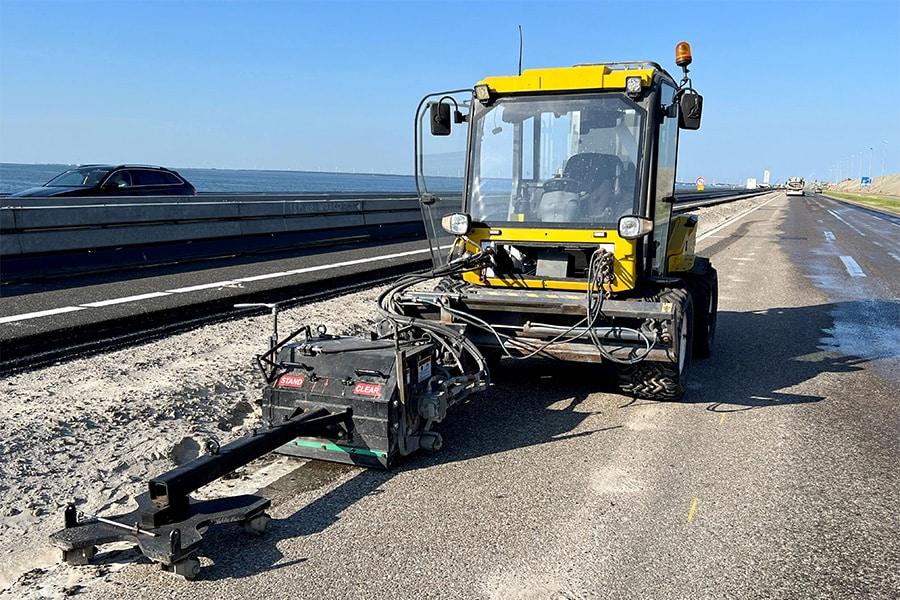
De Bruin Ermelo puts 80 kilometers out to size on the A10
Last summer, Rijkswaterstaat carried out major maintenance on the Zeeburg bridges in the A10. A big job that had to be done in a short time frame and involved a lot of people. Exactly the kind of work Johan de Bruin feels at home in. Commissioned by main contractor construction company BAM Infra Nederland, he was jointly responsible for the dimensioning, transport supervision and monitoring of the planning. He and his company are also busy developing a sustainable way of milling road markings. A niche market with a lot of potential, according to Johan.
Johan has been in the business for many years. He uses his knowledge and experience, under the name De Bruin Ermelo, as an independent contractor and work planner for BAM and other contractors in the civil engineering sector. The work he has performed for the major maintenance of the Zeeburger bridges is diverse, from sizing to supervising the day-to-day operations and monitoring the schedule. "In this case there was already a complete schedule," Johan explains, "it was up to me to make sure that each subcontractor could also perform his work at the right place at the right time, think of transport supervision and coordinating the planning with the various subcontractors. This work is not for everyone, you have to have a certain stress-resistance in you, because it is top sport when you consider that you are constantly on the move to get everything right."
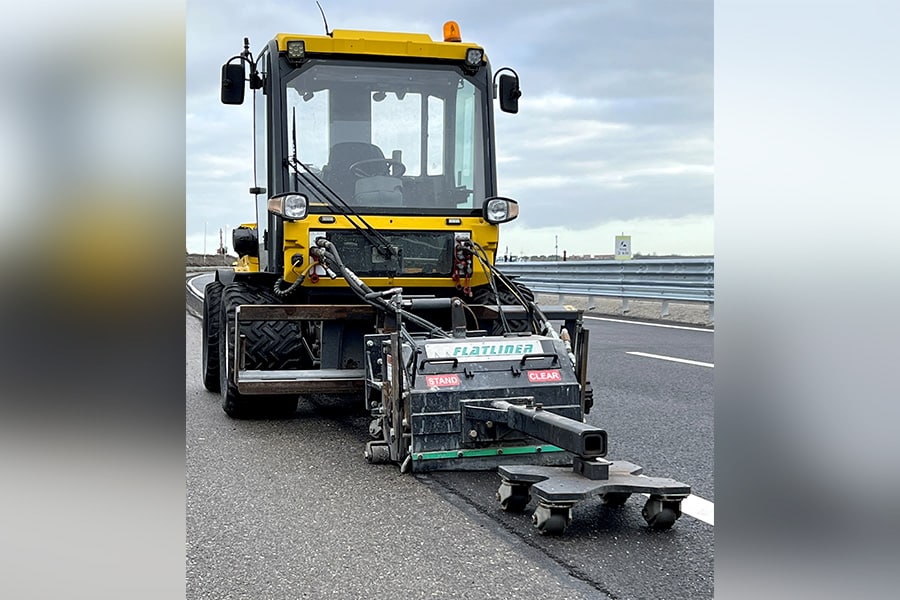
Road markings and steering lines
In addition to his work as a contractor, Johan has also provided dimensional engineering. For this he has a permanent pool of people with whom he works. Measurement includes drawing up height plans for the various works of art and the measurements for the installation of the new finger joints. "Everything that involves height, width and length, we measure. We apply the steering lines to the asphalt so the milling and asphalt trucks know exactly where to drive." The road markings and steering lines are laid out with self-built cars that lay out the steering lines at a speed of 5 to 6 kilometers per hour. "We have a total of three such cars, including one electric one soon. With the car, we are highly visible and work safely since we mostly work at night. The work area on the A10 where we carried out the sizing was over 2 kilometers. Here we set out a total of 80 kilometers of lines."
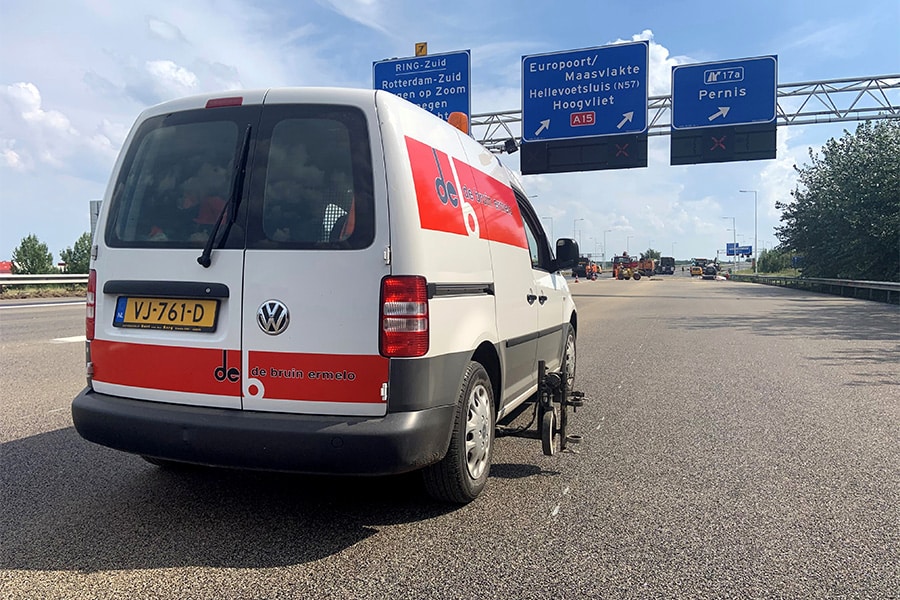
Sustainable removal and reuse of road markings
In addition to his work as a foreman and sizing, Johan focuses on removing road markings in a sustainable and responsible manner. "Sustainability is playing an increasing role within the industry. If you consider that on average some hundreds of tons of road markings are placed on the road, you also understand that they have to be removed again. So it's a market with a lot of potential in which we want to implement sustainability. It's becoming more and more of a specialty. This concerns both the reuse of the material and the way you remove it." Johan has had a special machine for removal developed in the United States. This machine allows him to mill into asphalt with an accuracy of 0.2 millimeters using a diamond cutter without damaging the existing asphalt. This saves a lot of unnecessary asphalt debris and thus transport movements. The same machine can also be used to mill through asphalt and concrete structures to make room for cables, pipes and fiberglass. "The technology is still under development and the first tests for reuse are underway," says Dr. K. K., "and the first tests for reuse are underway."
